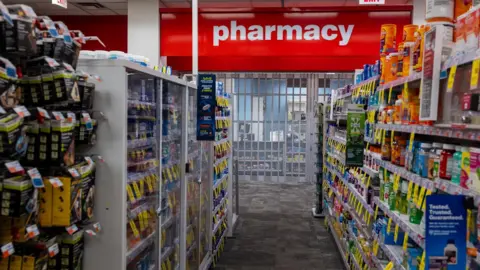Recent developments in U.S. healthcare policy highlight a significant executive order signed by President Donald Trump aimed at reducing prescription drug prices, a persistent concern for many American citizens. This initiative was announced with great optimism, suggesting that it could lead to price reductions of between 30% and 80%. However, the effectiveness of this order and its long-term implications remain subjects of debate among economists and healthcare experts.
The core premise of Trump’s order arises from the observation that American patients pay substantially more for their medications compared to individuals in other countries. During the announcement, Trump characterized the executive order as “one of the most consequential” in U.S. history. Despite his assertions, skepticism runs high; financial markets responded cautiously, with significant pharmaceutical stocks experiencing only momentary dips as investors anticipated minimal immediate impact from the order.
The complexities of the U.S. healthcare system contribute to elevated drug prices; it features a convoluted interaction of a robust private insurance market and public programs like Medicare and Medicaid. In contrast, other developed nations utilize more centralized strategies that allow them to negotiate drug prices effectively. For instance, a 2021 report from the U.S. Government Accountability Office indicated that prescription drugs in the U.S. might be priced 2 to 4 times higher than similar medications in countries such as Canada and France. This disparity has sparked bipartisan criticism, with both Republican and Democratic leaders recognizing the issue as a focal point in their respective agendas.
Trump’s order features several ambitious elements that could reshape the drug pricing landscape, although many details still require clarifications. The order instructs U.S. officials to prevent foreign pricing deals from causing unfair price increases for American consumers. However, what constitutes “unreasonable” price hikes and the measures to address such practices remain vague. Additionally, the initiative includes plans for drug companies to sell more directly to consumers and explore importing drugs from international markets where they are priced lower.
Notably, the proposal embodies a “Most Favored Nation” (MFN) status, where the price of a drug in the U.S. would be aligned with the lowest overseas price. Trump’s assertion that pharmaceutical companies would cooperate either voluntarily or through government enforcement raises questions about the administration’s capacity to impose compliance.
Responses within the financial markets reflect skepticism regarding the order’s potential effectiveness. Share prices of major drug manufacturers such as Pfizer and Eli Lilly initially fell but quickly rebounded, indicating investor beliefs that the executive order would not significantly alter the landscape of drug pricing.
Several hurdles could impede the success of Trump’s plan. Pharmaceutical companies might opt to withdraw from international markets where they currently offer lower prices, potentially limiting options for U.S. consumers. Additionally, critics within the academic community, such as researchers from the University of Southern California, caution that adopting a European-style pricing model could negatively affect healthcare outcomes in the U.S.
The political implications of Trump’s order also intertwine with broader issues concerning public health. For instance, Health Secretary Robert F. Kennedy Jr. has emphasized preventive health measures, including proper diet and exercise, which seemingly run counter to a heavy reliance on pharmaceutical solutions for critical health issues.
Industry representatives have largely decried the executive order, arguing it could undermine future drug supply and research funding. Key industry figures contend that attempting to adopt foreign pricing strategies may hinder innovation and development within the pharmaceutical sector.
As the public and industry stakeholders dissect the ramifications of this executive order, it becomes evident that the path towards lowering prescription drug prices is fraught with challenges. Observers suggest that genuine progress in reducing drug prices will depend on political will, industry cooperation, and a clear strategy that promotes transparency without stifling innovation. In summary, while Trump’s initiative aims to address a critical public concern, many remain dubious about its potential for tangible change.



